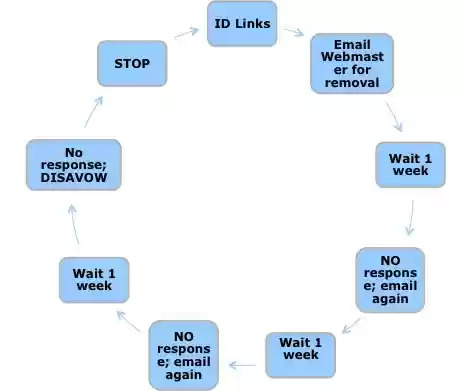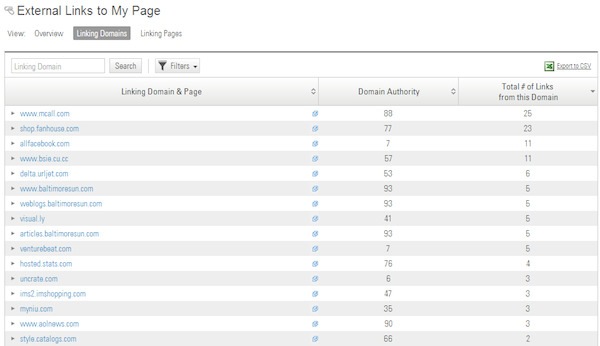Google’s Penguin algorithm targets “link schemes” and unnatural link profiles that it believes are in place to manipulate and boost Web page rankings in Google’s search engine results. Unfortunately, some website owners aren’t even aware that their site has an unnatural link profile, and are quite surprised when they receive a penalty.
In this post, we’ll go over how to avoid the “Penguin slap,” including best practices for conducting a backlink analysis and how to disavow links.
Today, we’ll cover:
- The link clean-up process
- How to get backlinks use BrightEdge
- The last resort: submit a file to disavow links
Get Started with Google Webmaster Tips and Tools
As a site owner who is otherwise compliant with Google’s Webmaster Guidelines, you still may find yourself in trouble if Google finds that links to your website (backlinks) are “unnatural,” meaning the links weren’t “editorially placed or vouched for by the site’s owner.”
Google offers a number of examples of such unnatural links that may violate its guidelines in its Webmaster Tools Help page on link schemes.
Before you get started on your link clean-up project, you will first need to set up a Google Webmaster Tools (GWT) account. I recently posted a step-by-step guide on how to do so, here.
Overview of the Link Clean-Up Process
There is a four-step process to disavow links on your site:
- Get a list of domains linking to your site, which you can export from GWT (or BrightEdge, if you use it).
- Examine those links, and determine which ones may be a source of trouble.
- For those links that you identify as problematic, email the site’s webmaster and ask for removal of the link.
- After you’ve attended to all of the above, and specifically No. 3, all links that have not been removed then need to be added to your site’s “disavow links list” for submission to Google.
Here is a flow chart showing the link clean-up process that Google prefers you take -- and that BrightEdge recommends -- before you disavow links via Google:

Smart Tips for Analyzing Your Backlinks
When analyzing the backlinks to your website, you’ll want to first examine the authority metrics of the site linking to yours, such as page and domain score. After determining those metrics, you’ll then want to establish thresholds to guide you in investigating further, which take into account:
- Low Quality: You might decide that “low quality” means a site where the domain authority score is less than 20.
- High Effort: Invest in finding the best way to reach out to all “low quality, high effort” domains that link in at least three to four times.
- Minimal Effort: You might decide that if a “low quality” domain links to your site three or fewer times, it's not worth your time to audit. In that case, you might just request removal from the domain’s WHOIS administrative contact (easy to find, assuming the domain is not privately registered).
When determining whether to disavow links, you’ll also want to consider that a linking domain may have decent page and domain score metrics, yet still be harmful to your profile if it violates Google’s Webmaster Guidelines or engages in risky activity.
Using BrightEdge for Analyzing Disavow Links
BrightEdge’s SEO platform offers cutting-edge tools for site owners to both manage and analyze their backlinks, both in terms of understanding their own link profiles relative to those of the market, and in terms of evaluating the risk signals when analyzing their data.
Understanding your own link profile by visiting the Backlinks Analysis feature in BrightEdge. Here, you can also review and compare your link profile to the market and specific competitors.
Using the Backlinks Analysis data supplied by BrightEdge, you’ll be able to analyze:
- Anchor text: What is the split between brand and keyword optimized anchor text?
- Volume: Ratio of links by unique domains.
- Quality: Higher domain and page authority is better.
- Relevance: Is the topic and theme of the linking page similar to the linked-to page
You’ll also want to look at domain diversity (total links versus referring domains). In an ideal world, we would like to get one link from one domain, and then move on. A high number of links coming from a low number of domains may trip a search engine's spam filter. Look out for and avoid site-wide links (for example, in a sidebar or footer).
Check the quality of your backlinks in BrightEdge by selecting “Linking Pages” to see the list of backlinks to the specified URL. Select “Linking Domains” to view the domains. The higher the domain authority, the better. Click the column header to sort.

Pro tip: Ignore “nofollow” links. These can’t harm your website.
The Last Resort: Google’s Disavow Links Tool
After analyzing your backlinks, you may find some that are low quality. If your efforts to remove these backlinks have proven unfruitful, your last option is to disavow links on your site you consider "bad".
In GWT’s instructions on how to disavow backlinks, it stresses:
This is an advanced feature and should only be used with caution. If used incorrectly, this feature can potentially harm your site’s performance in Google’s search results. We recommend that you disavow backlinks only if you believe you have a considerable number of spammy, artificial, or low-quality links pointing to your site, and if you are confident that the links are causing issues for you. In most cases, Google can assess which links to trust without additional guidance, so most normal or typical sites will not need to use this tool.
That noted, if you still find yourself in the position where there is no other recourse except to request Google to exclude the offending links when assessing your site, here are the best practices for doing so ...
Creating a Disavow File
Google’s disavow links tool works with appropriately formatted text files. From Google:
You’ll download a file containing all the pages linking to your site. Use this to create a text file (the file type must be .txt and it must be encoded in UTF-8 or 7-bit ASCII) containing only the links you want to disavow—one link per line. If you want Google to ignore all links from an entire domain (like example.com), add the line "domain:example.com". Your text file can include additional information about excluded links, as long as each line of description begins with the "#" character (all lines beginning with # will be ignored). Don't upload the entire list of links to your site: the text file that you upload is the list of links you want Google to ignore.
For commenting: Lines starting with a hashtag (#) should be used for comments. This is useful for splitting up groups of links in large files, thereby making updates easier going forward.
Once satisfied that you’ve carefully documented and properly formatted your list for the disavow links file, visit Google’s site for submitting and uploading it.
Try to be patient with the process – it can take some time to fully resolve – and remember to be thorough in your backlink analysis. If you believe a source is low quality, or you have a large number of links from one domain, it’d be far more efficient to simply disavow the entire domain.
Penguin can be a major set back for websites, but with the proper process in place to deal with it, including proactive analysis of your link profile, you’re well on your way to having a “healthier” site that will fare better when Penguin comes knocking.
